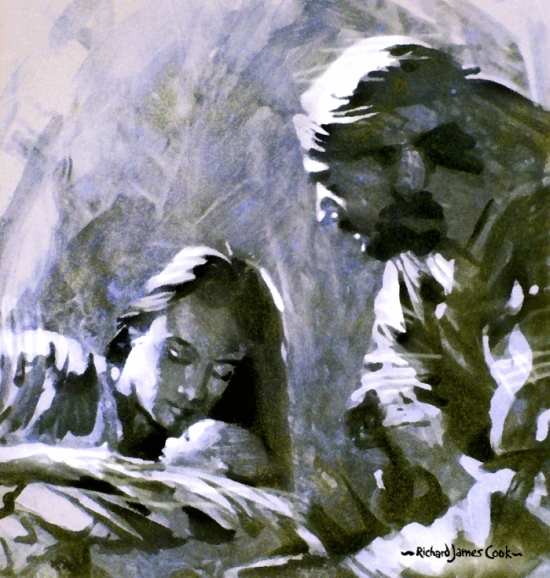756. 'All the fountains of the great deep were split open' means the full extent of temptation involving things of the will. This becomes clear from what has been stated already about temptations being of two kinds, the first involving things of the understanding, the second those of the will, and about the latter being severe in comparison with the former. It is clear as well from the fact that up to now temptation involving things of the understanding has been the subject. It is similarly clear from the meaning of 'the deep' as evil desires and derivative falsities, as shown already in 18, and also in the following in the Word: In Ezekiel,
Thus says the Lord Jehovah, When I make you a city laid desolate, like the cities that are not inhabited, when I shall cause the deep to come up over you, and many waters have covered you. Ezekiel 26:19.
Here 'the deep' and 'many waters' stand for the full extent of temptation.
In Jonah,
The waters closed around me, even to my soul, the deep surrounded me. Jonah 2:5.
Here similarly 'the waters' and 'the deep' stand for the full extent of temptation.
In David,
Deep is calling to deep at the noise of Your waterspouts; all Your breakers and all Your waves have gone over me. Psalms 42:7.
This plainly stands for the full extent of temptation. In the same author,
He rebuked the Sea Suph and it became dry; He caused them to go through the deeps, as in a desert, and He saved them from the hand of him that hated them, and He delivered them from the hand of the enemy. And the waters covered their adversaries. Psalms 106:9-11.
Here 'the deep' stands for temptations in the wilderness.
[2] In early times 'the deep' meant hell, and delusions and persuasions of falsity were likened to waters and streams, and also smoke, pouring out of it. This is also what the hells of some people look like, that is to say, like deeps and like seas. These in the Lord's Divine mercy will be described later on. The evil spirits who are responsible for man's vastation, and also for temptation, come from these places. And their delusions which they infuse, and the desires with which they inflame man, are like deluges and vapours pouring out of there. For, as has been stated, man is joined to hell through evil spirits, and to heaven through angels. Consequently when 'all the fountains of the deep' are said to have been 'split open' matters of that kind are meant. The fact that hell is called the deep, and the foul things that come from there are called streams, is clear in Ezekiel,
Thus said the Lord Jehovih, On the day he went down into hell, I made him mourn, I covered the deep over him, and I restrained its streams, and the great waters were stayed. Ezekiel 31:15.
Hell is also called 'the deep' in John, in Revelation 9:1-2, 11; 11:7; 17:8; 20:1, 3.








